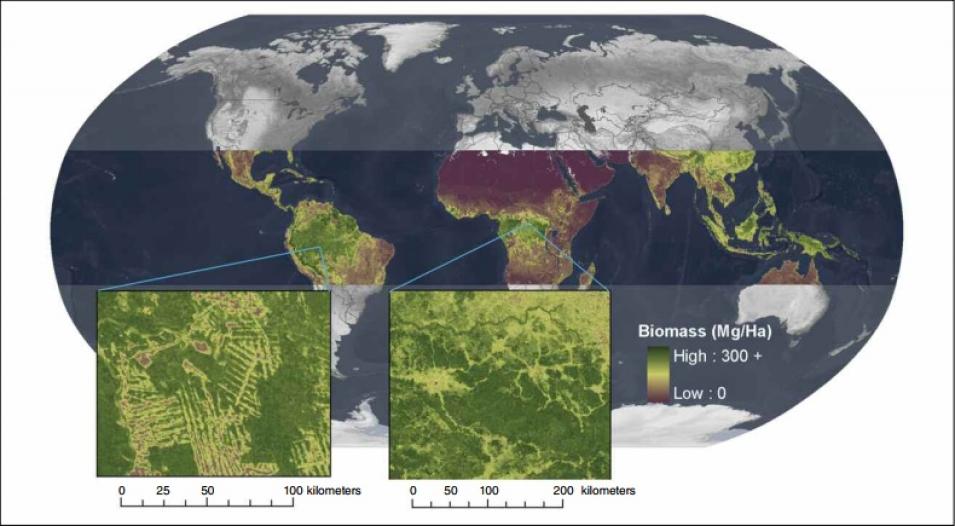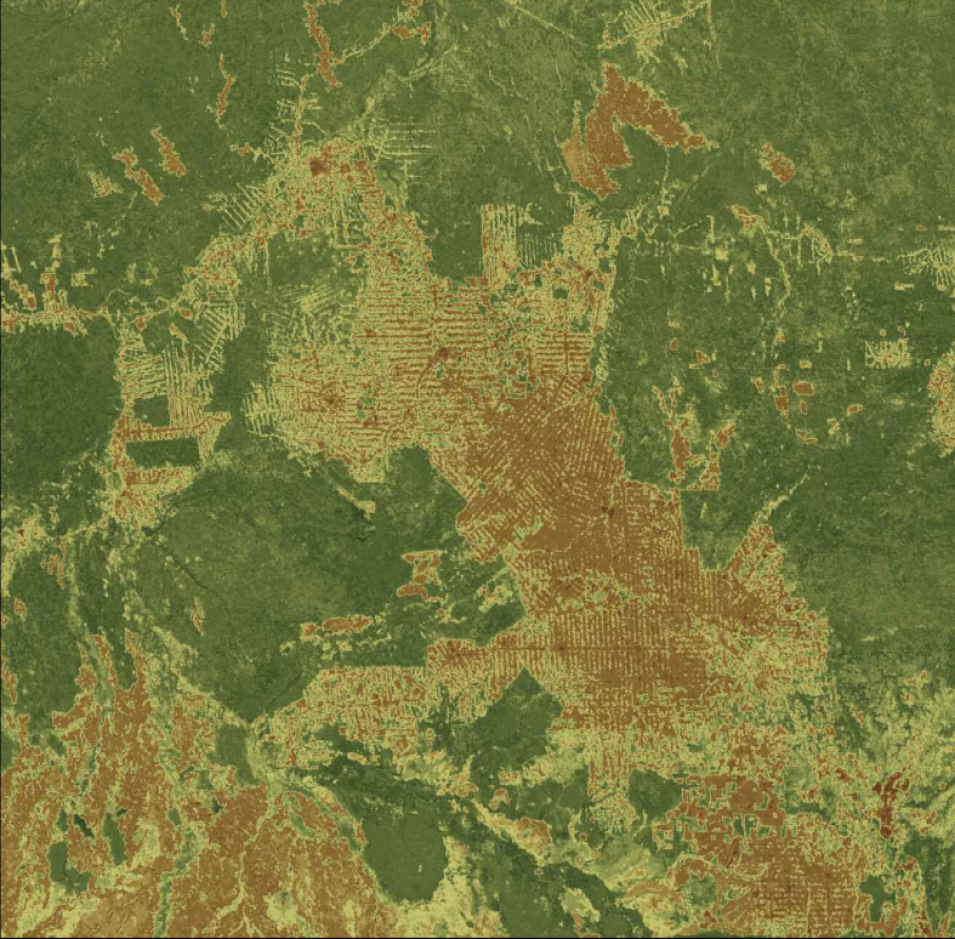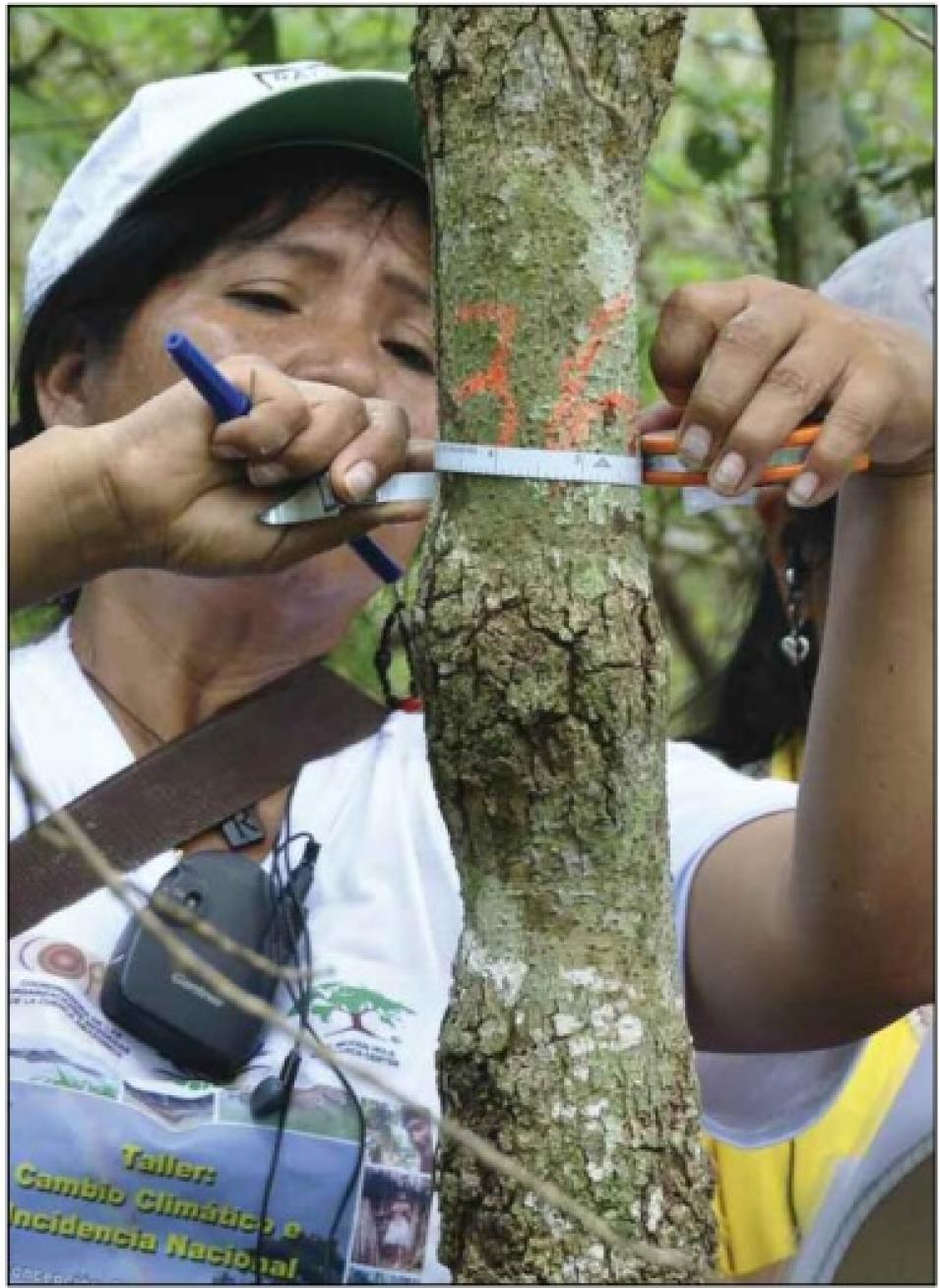Global maps, local benefits
The WHRC team has now created two forest maps that span the tropics: one based on PALSAR radar data, and the other using MODIS and GLAS data to estimate biomass across the tropical region. The next step is to combine the two maps and validate the data with field measurements taken by the WHRC team and local people. Kellndorfer and his colleagues believe that the data will allow them to build an unprecedented map of tropical forest carbon. “We have data sets that cover the entire tropical belt, from 23 degrees north to 23 degrees south,” Kellndorfer said. “Now we are trying to convert initial data sets to forest cover and carbon estimates.”
When the carbon map is complete, the team plans to give it free of charge to people around the world. Countries will be able to use it for a reference, and add their own field data to improve regional carbon estimates. Walker said, “It’s fitting that we’ll be able to release this to the public for free, because the product doesn’t just belong to us. It belongs to all those folks around the world who have contributed to it.”
References
Baccini, A., N.T. Laporte, S.J. Goetz, M. Sun, and H. Dong. 2008. A first map of tropical Africa's above-ground biomass derived from satellite imagery. Environmental Research Letters, doi:10.1088/1748-9326/3/4/045011.
Baccini, A., N.T. Laporte, S. Goetz, M. Sun, W. Walker, J. Kellndorfer, and R.A. Houghton. 2009. Pantropical forest carbon mapped with satellite and field observations. Report for the United Nations Framework Convention on Climate Change 15th Conference of the Parties, 7-18 December 2009, Copenhagen, Denmark. http://www.whrc.org/policy/pdf/cop15/biomass_cop15.pdf.
For more information
NASA Alaska Satellite Facility Distributed Active Archive Center (ASF DAAC)
NASA Land Processes DAAC (LP DAAC)
NASA National Snow and Ice Data Center DAAC (NSIDC DAAC)
Moderate Resolution Imaging Spectroradiometer (MODIS)
Geoscience Laser Altimeter System (GLAS)
The United Nations Collaborative Programme on Reducing Emissions from Deforestation and Forest Degradation in Developing Countries
Woods Hole Research Center Pan-Tropical Mapping of Forest Cover and Above-Ground Carbon Stock
| About the remote sensing data |
| Satellites |
Advanced Land Observation Satellite (ALOS) |
Terra and Aqua |
Ice, Cloud, and Land Elevation Satellite (ICESat) |
| Sensors |
Phased Array Type L-band Synthetic Aperture Radar (PALSAR) |
Moderate Resolution Imaging Spectroradiometer (MODIS) |
Geoscience Laser Altimeter System (GLAS) |
| Data sets |
23 centimeter L-band radar |
500 meter Nadir BRDF-Adjusted Reflectance (NBAR) |
GLAS/ICESat L2 Global Land Surface Altimetry Data |
| Resolution |
10 to 20 meter |
500 meter |
70 meter circles |
| Parameters |
Vegetation cover |
Vegetation |
Elevation |
| DAACs |
NASA Alaska Satellite Facility Distributed Active Archive Center (ASF DAAC) |
NASA Land Processes DAAC (LP DAAC) |
NASA National Snow and Ice Data Center DAAC (NSIDC DAAC) |




